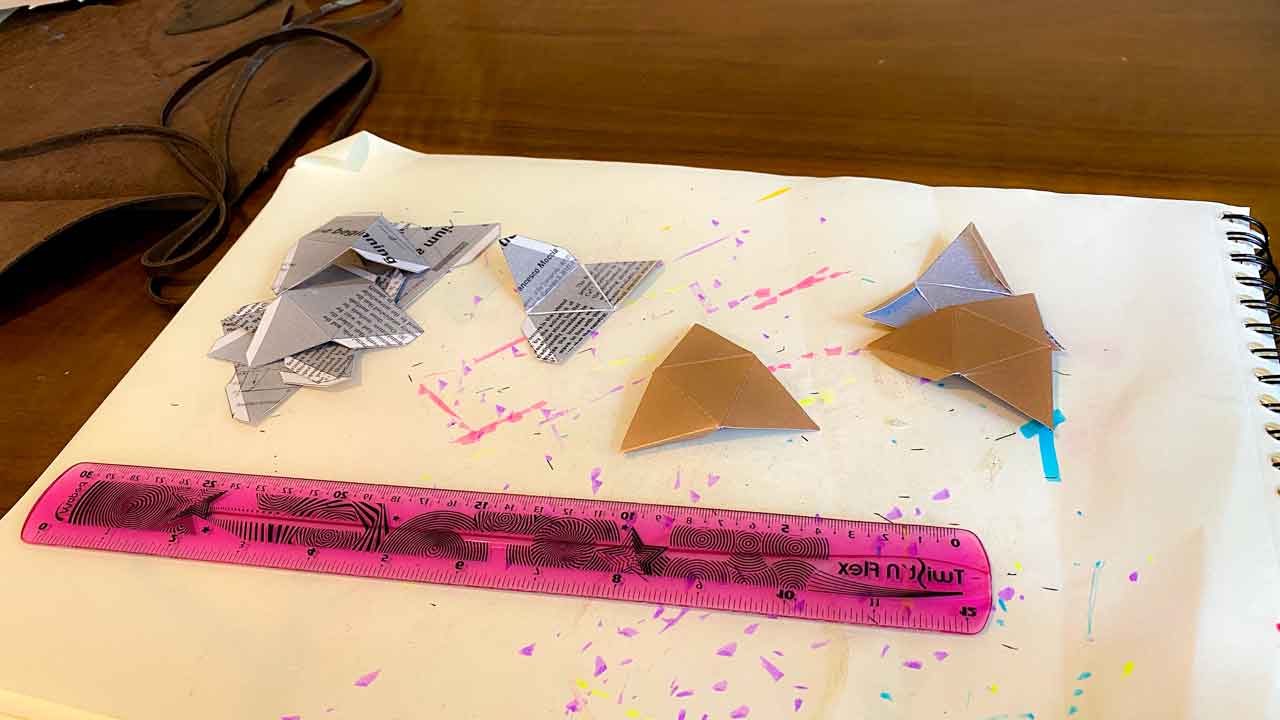The Sierpiński triangle
Nov 17, 2020
The Sierpiński triangle can be a pyramid. It is also called the Sierpiński gasket or Sierpiński sieve. There is no doubt that it is a beautiful thing, but how is it relevant to anatomy?
Fractals are sets of modules that repeat recursively, reflecting self-similarity. Fractals appear everywhere in nature, from plants to planetary systems and we find fractal-like growth in our human bodies as well. You can read all about the triangle, spirality, self-similarity and more in my book. We'll look at Mount Meru and the SriYantra to see the correlation between the Fibonacci spiral, Pascal's Triangle, and this Sierpiński Triangle!
Here I thought I'd share a few snapshots from the process of making this model:

You can use the template provided in my book to make your templates - print them out on an A4 paper or trace by hand.

Use a scalpel to reinforce the fold lines before you crease, then use a glue stick to adhere the flaps. You'll need 64 tetrahedra for this model.

Use a glue gun to stack your mini tetras into middle-level tetras, and these will stack to become four major tetras that stack to reflect the fractal architecture into your Sierpiński Tetrahedron (a.k.a. Tetrix). Enjoy!
Stay connected with news and updates!
Join my mailing list to receive the latest news and updates. Don't worry, your information will not be shared.
I hate SPAM. I will never sell your information.



